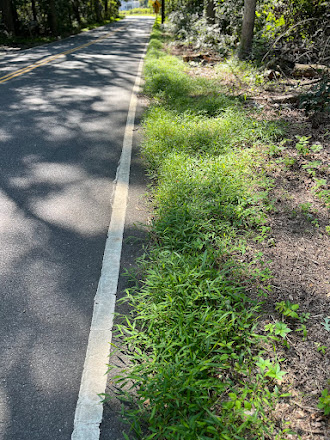One of PrincetonNatureNotes' sister blogs is FOHWard.org, specific to our work and play at Herrontown Woods, the fabled preserve that our nonprofit Friends of Herrontown Woods takes care of. Posts range from the celebratory to the comic, as in when we intervened to scuttle an attempted "theft" of a portapotty.
For those who imagine cutting invasive species to be dull work, a recent post on that blog, Stewardship and Discovery at Herrontown Woods, might be of particular interest. It captures how elements of beauty, effort, strategy, serendipity, and discovery can come together to make a stewardship session a rich and satisfying experience.
Cutting nonnative invasive shrubs, we are essentially deer with loppers. Deer move through the forest looking for something edible to browse. They generally leave the nonnative shrubs uneaten, and so to prevent those nonnative, inedible shrubs from taking over, we move through the forest with our loppers with an eye for "browsing" the nonnatives, to balance out the deer's persistently lopsided appetites. Unlike deer, we aren't in the woods 24/7, and so to have a lasting effect it's necessary to treat the cut stem so it won't grow back. By releasing native plants from competitive pressure, over time we make the forest more edible for deer and other wildlife, essentially expanding the acreage of functional habitat in Princeton.
Some would say that humans are an invasive species, so who are we to presume we can make a positive difference. But if we can be considered invasive, we are also equipped to play the role of stewards, to see the consequences of our invasiveness and act to heal the altered earth. As we move deer-like through the forest, our appetite is not an extractive search for food but for restoring balance. To abdicate on that role would be to deny what it means to be human.
I don't know if deer can appreciate beauty or serendipity as they browse, but we can. In Herrontown Woods in autumn, each leaf reveals its inner color. Each boulder is a work of nature's art, mottled with varied shapes of lichen and moss, like the mottled skin of whales navigating the oceans. To steward a preserve is, of course, a considerable task and responsibility, but in another way, working with nature is a great privilege, allowing us to realize our highest role, as stewards, appreciators, and healers of nature's creations.
















































